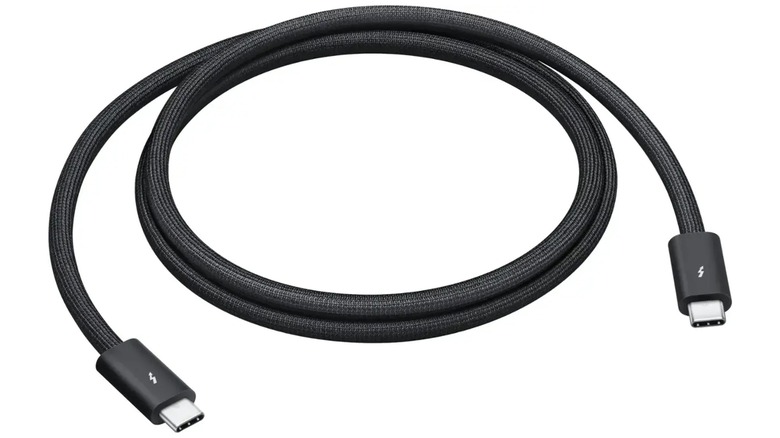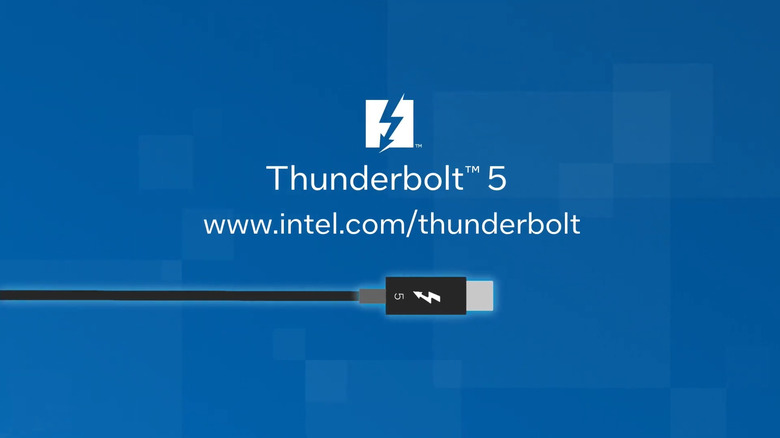Why Do Some USB Ports Have Lightning Bolts? Here's What It Means
We may receive a commission on purchases made from links.
Over the course of the three decades that the USB connectivity standard has existed, there have been so many variations and revisions of USB that finding the right cable or charger was more confusing than it needed to be. Finding the appropriate cable for fast charging once that became common was tricky enough, to say nothing of the many peripheral-side connectors that we've had to deal with, like Mini USB, Micro USB, USB Type-B, and USB Type-C. (To say nothing of the many different color-coded revisions of the computer/host-side USB Type-A connector.) As the 2020s go on, though, the computing/consumer electronics industries have increasingly relied on USB Type-C on both ends of the cable, making the process a lot more standardized and easy to deal with.
However, if you go shopping for USB Type-C cables, you may notice that some cables are clearly marked as being fully up-to-date USB Type-C cables rated for the newest standard with the highest speeds, USB4, while also carrying other markings as well. Most commonly, besides brand logos and specs for the cable, many of these cables include a lightning bolt logo on the connector. Where this gets confusing is that while this logo is indicative of a connectivity standard that's backward compatible with USB4 over USB Type-C and uses the same connector, this separate standard is not part of the USB spec itself. We're talking about Thunderbolt, Intel's standard (popularized by Apple, which has featured Thunderbolt connections on Macs for over a decade) that started separately from USB but has, since 2015, become intertwined with it.
The lightning bolt signifies compatibility with Intel's Thunderbolt standard
USB Type-C cables with lightning bolts on the connectors are Thunderbolt cables, meaning that they work with Intel's Thunderbolt connectivity standard that's backward compatible with USB-C. (A number next to the lightning bolt indicates which Thunderbolt revision it can deliver the full speed of.) Thunderbolt is now on its fifth iteration since 2011, Thunderbolt 5, and has utilized a USB Type-C connector since 2015's Thunderbolt 3. (Before, it used a Mini DisplayPort connector for Thunderbolt and Thunderbolt 2.)
USB4, as of the 2.0 spec version released in late 2022, supports up to 80 Gbps data transfer speeds (up to 120 Gbps when it comes to asymmetric data transfers) — and Thunderbolt 5, which was introduced several months later, implements that specification, meaning it is capable of the same 80 Gbps bidirectional performance. Thunderbolt likewise includes a Bandwidth Boost mode that allows it to transmit data at 120 Gbps while receiving data at 40 Gbps (aka, asymmetric transfers), plus there are 64 Gbps of PCI Express lanes, with the same speed for networking over Thunderbolt 5 as well.
If you're wondering what the use case is for the average consumer, the most obvious one would be supplementing the internal storage of something like a Mac Mini without paying Apple's very high premium for upgrading internal storage at point of purchase. The throughput that Thunderbolt 5 is capable of making it so that you can dramatically upgrade your high-speed storage at potentially lower prices, turning one of the best bargains in desktop computing into an even bigger one.

